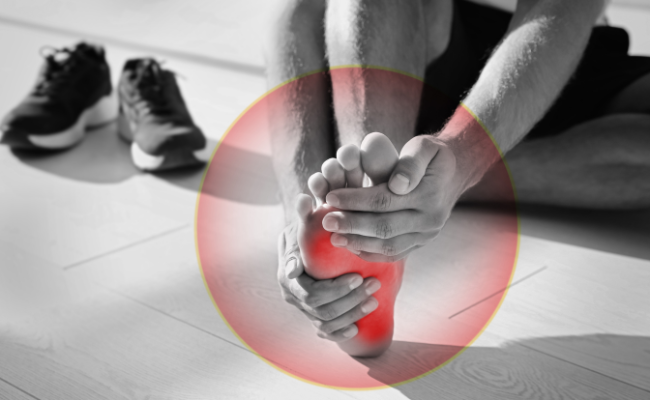How to Treat Foot Injury?
- November 02, 2023
- No Comments

What Causes Foot Injuries?
Foot injuries can be painful and disruptive to your daily life. Whether it's a sprain, strain, fracture, or another type of injury, knowing how to properly treat it is essential for a swift recovery. In this guide, we will explore what causes foot injuries, why immediate treatment is crucial, how to treat them effectively, available treatment solutions, and the benefits of following the recommended protocols.
Foot injuries can occur due to various reasons, including:
- Accidents: Accidental falls, slips, or collisions can lead to injuries.
- Sports Activities: High-impact sports and insufficient protective gear increase the risk.
- Overuse: Prolonged standing, walking, or repetitive movements can strain the foot.
- Poor Footwear: Ill-fitting or unsupportive shoes can contribute to injuries.
- Underlying Conditions: Conditions like osteoporosis weaken bones, making them more susceptible to fractures.
Why Immediate Treatment is Crucial?
Timely and appropriate treatment of foot injuries is vital for several reasons:
- Pain Management: Immediate care can help alleviate pain and discomfort.
- Faster Recovery: Proper treatment speeds up the healing process.
- Prevention of Complications: Timely care reduces the risk of complications.
- Restoration of Function: Effective treatment aids in regaining full foot function.
- Prevents Chronic Issues: Neglecting injuries can lead to long-term problems.
How to Treat Foot Injuries?
The treatment of foot injuries largely depends on the type and severity of the injury. Here's a general guideline for common foot injuries:
- Rest: Limit weight-bearing on the injured foot. Use crutches if necessary.
- Ice: Apply an ice pack wrapped in a cloth for 15-20 minutes every 1-2 hours to reduce swelling.
- Compression: Use an elastic bandage to support the injured area but avoid wrapping it too tightly.
- Elevation: Keep the foot elevated above the heart whenever possible to reduce swelling.
- Pain Management: Over-the-counter pain relievers can help with pain control.
- Immobilization: For fractures or severe sprains, a cast or walking boot may be necessary to immobilize the foot.
- Physical Therapy: Rehabilitation exercises can enhance recovery and prevent future injuries.
- Orthotics: Custom-made or over-the-counter orthotic inserts can provide foot support and alignment.
Treatment Solutions:
Specific foot injuries may require specialized treatment:
- Fractures: Severe fractures may need surgical intervention, while minor ones can be managed with immobilization.
- Sprains: Grade I and II sprains respond well to conservative treatment, while Grade III may require a surgical procedure.
- Achilles Tendon Injuries: These may require rest, physical therapy, or, in extreme cases, surgical repair.
- Plantar Fasciitis: Stretching exercises, orthotic inserts, and anti-inflammatory medications can help.
- Bunions: In severe cases, surgery may be necessary to correct deformities.
Benefits of Proper Foot Injury Treatment:
- Faster Recovery: Effective treatment expedites the healing process, allowing you to return to your regular activities sooner.
- Pain Relief: Prompt care helps manage pain, reducing discomfort and improving your quality of life.
- Prevention of Complications: Addressing the injury immediately reduces the risk of secondary issues.
- Regained Function: Proper treatment enhances your chances of regaining full foot function.
- Preventing Chronic Conditions: Timely care prevents the development of chronic foot problems.
Comments (0)